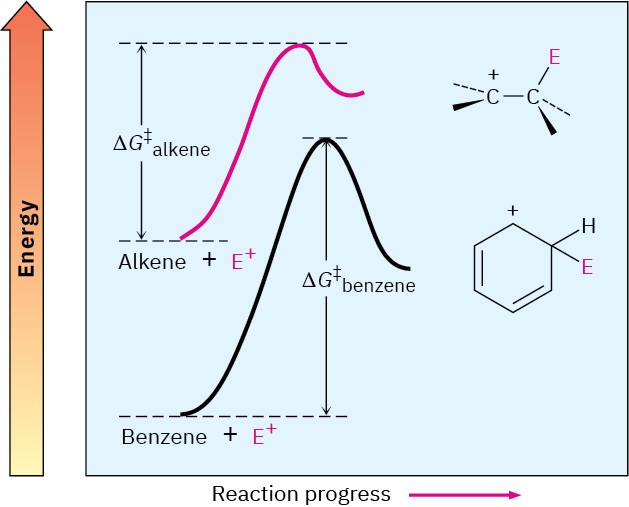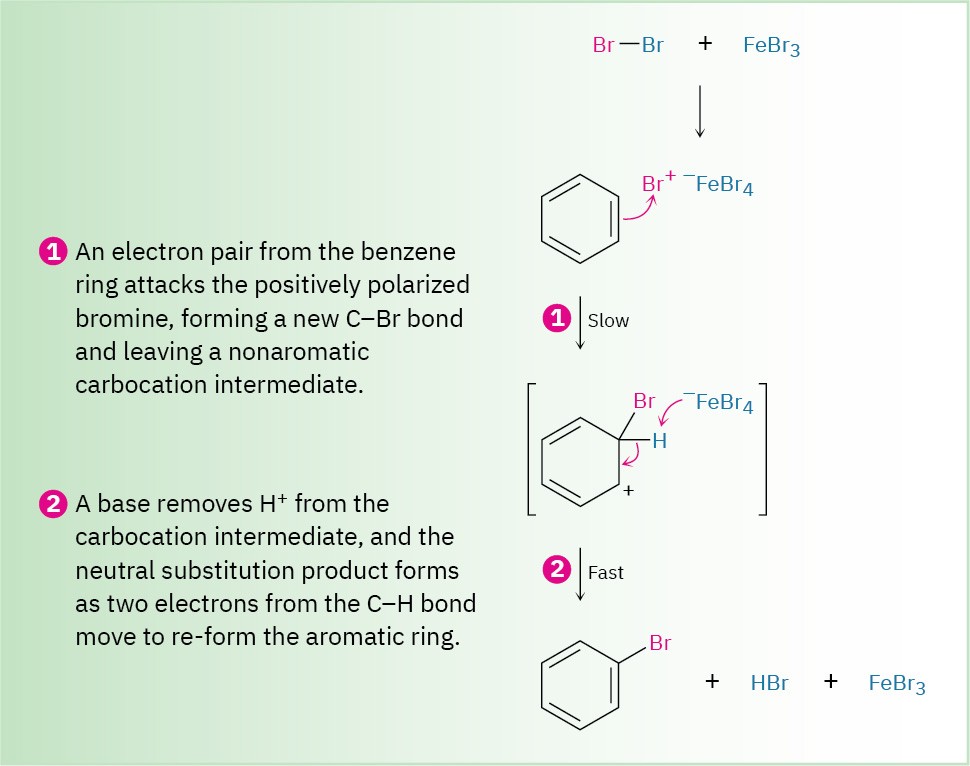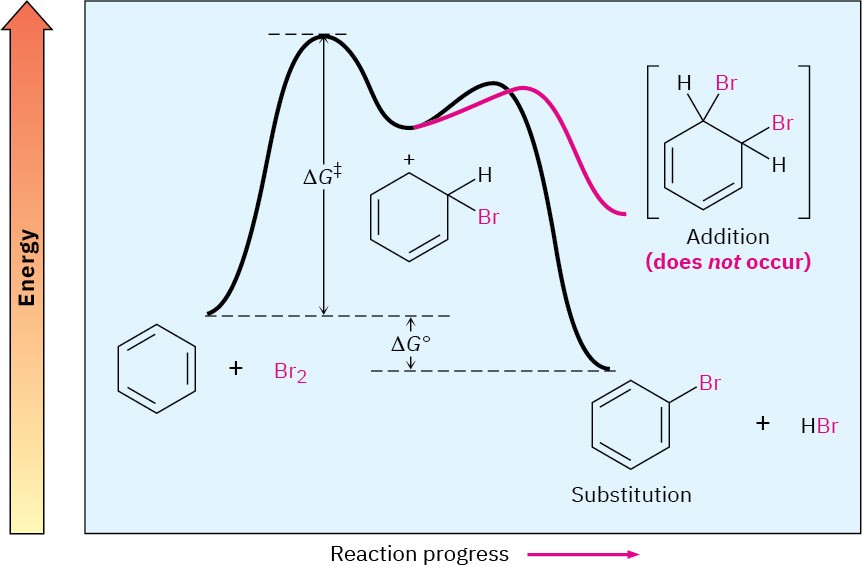16.1 Electrophilic Aromatic Substitution Reactions: Bromination
Before seeing how electrophilic aromatic substitutions occur, let’s briefly recall what we said in the chapter on Alkenes: Structure and Reactivity about electrophilic alkene additions. When a reagent such as HCl adds to an alkene, the electrophilic hydrogen ion approaches the π electrons of the double bond and forms a bond to one carbon, leaving a positive charge at the other carbon. This carbocation intermediate then reacts with the nucleophilic Cl– ion to yield the addition product.

An electrophilic aromatic substitution reaction begins in a similar way, but there are a number of differences. One difference is that aromatic rings are less reactive toward electrophiles than alkenes. For example, Br2 in CH2Cl2 solution reacts instantly with most alkenes but does not react with benzene at room temperature. For bromination of benzene to take place, a catalyst such as FeBr3 is needed. The catalyst makes the Br2 molecule more electrophilic by polarizing it to give a FeBr!–Br# species that reacts as if it were Br+. The polarized Br2 molecule then reacts with the nucleophilic benzene ring to yield a nonaromatic carbocation intermediate that is doubly allylic (Section 11.5) and has three resonance forms.

Although more stable than a typical alkyl carbocation because of resonance, the intermediate in electrophilic aromatic substitution is nevertheless much less stable than the starting benzene ring itself, with its 150 kJ/mol (36 kcal/mol) of aromatic stability. Thus, the reaction of an electrophile with a benzene ring is endergonic, has a substantial activation energy, and is rather slow. Figure 16.2 shows an energy diagram comparing the reaction of an electrophile with an alkene and with benzene. The benzene reaction is slower (higher ∆G‡) because the starting material is more stable.

Figure 16.2 A comparison of the reactions of an electrophile (E+) with an alkene and with benzene: Δ𝐺‡alkene < Δ𝐺‡benzene. The benzene reaction is slower than the alkene reaction because of the stability of the aromatic ring.
Another difference between alkene addition and aromatic substitution occurs after the carbocation intermediate has formed. Instead of adding Br– to give an addition product, the carbocation intermediate loses H+ from the bromine-bearing carbon to give a substitution product. Note that this loss of H+ is similar to what occurs in the second step of an E1 reaction (Section 11.10). The net effect of reaction of Br2 with benzene is the substitution of H+ by Br+ by the overall mechanism shown in Figure 16.3.
Figure 16.3 MECHANISM
The mechanism for the electrophilic bromination of benzene. The reaction occurs in two steps and involves a resonance-stabilized carbocation intermediate.

Why does the reaction of Br2 with benzene take a different course than its reaction with an alkene? The answer is straightforward. If addition occurred, the 150 kJ/mol stabilization energy of the aromatic ring would be lost and the overall reaction would be endergonic.
When substitution occurs, though, the stability of the aromatic ring is retained and the reaction is exergonic. An energy diagram for the overall process is shown in Figure 16.4.

Figure 16.4 An energy diagram for the electrophilic bromination of benzene. Because the stability of the aromatic ring is retained, the overall process is exergonic.
Problem 16-1
Monobromination of toluene gives a mixture of three bromotoluene products. Draw and name them.

